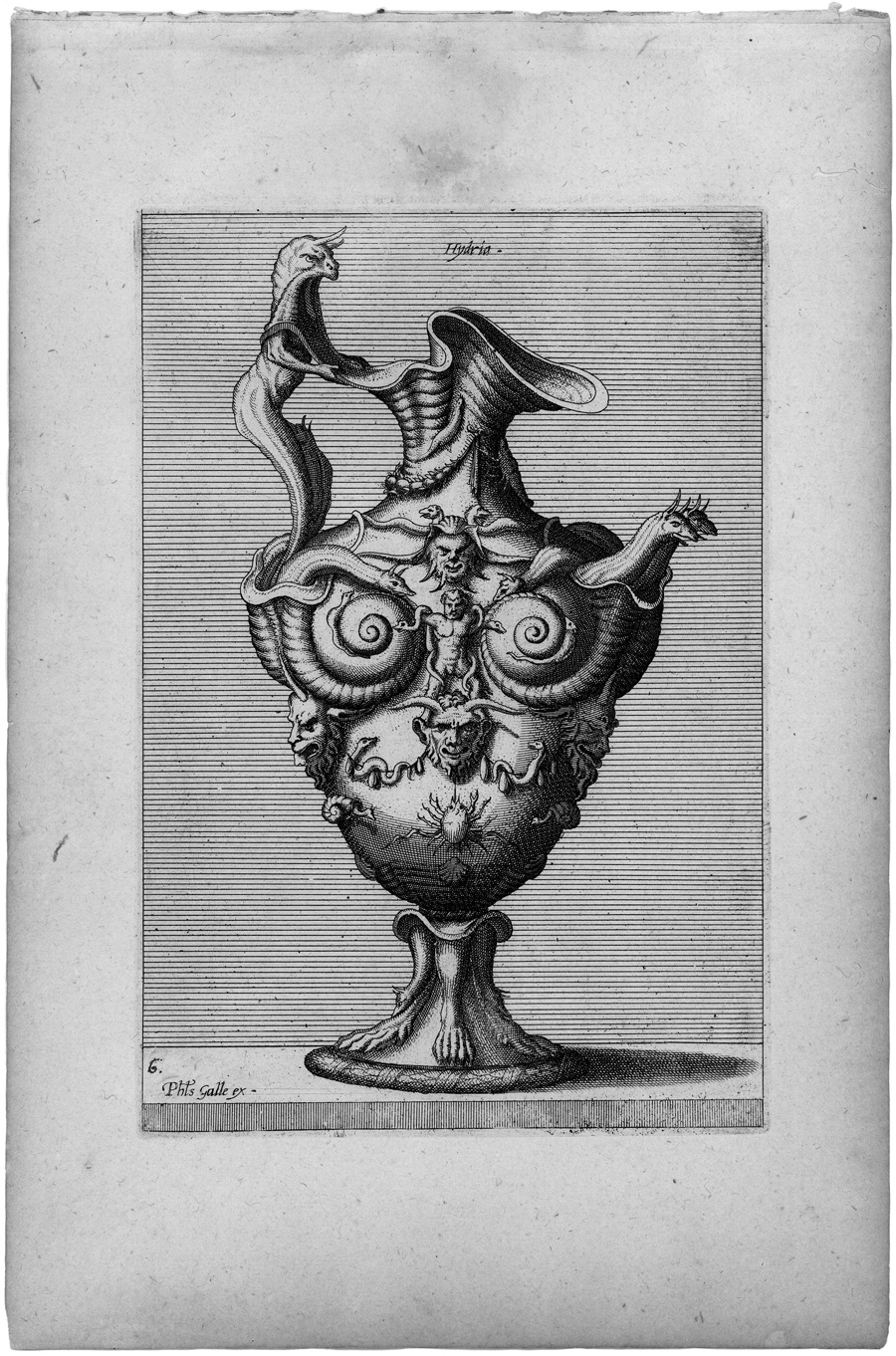Loading the page ...
Hans Vredeman de Vries
(1527 Leeuwarden – 1606 ?)
The Suite of the Vessels. 11 etchings, 1 engraving. 4to (2 sheets oblong 4to). 1563. Berliner Ornamentstichkatalog 1004; Hollstein 165 – 176 probably III (of V).
This series in its complete form is extremely rare. Complete suites of the first edition published by Hieronymus Cock in 1563 are only to be found in Amsterdam, Brussels and Vienna. Peter Fuhring has established the existence of just one integral example of the second edition, published by Philips Galle, which is now in the collection of the Kunstbibliothek Berlin. Our series probably belongs to the third edition, also published by Philips Galle, of which no other complete copies are known to exist.
The Mannerist richness of forms in these fantasy images by Vredeman are an impressive manifestation of his apparently boundless power of imagination and creative drive. It is astonishing that an authoritative monograph on the life and work of this versatile and prolific Renaissance genius – Vredeman de Vries worked as a painter, ornamental draughtsman, architect, and fortifications engineer – has yet to be written. A profound knowledge of the treatises of Vitruv and Serlio, the influence of the formal repertoire of Jacques Androuet du Cerceau, and stylistic impulses by the Italian art of the Cinquecento form the basis for his highly personal inventions and ornamental designs, which exerted a powerful and lasting influence on the architecture and handicrafts of Northern Europe in the 16th and 17th centuries.
In the present series the influence of Late Renaissance Italian art is unmistakable. Some prints seem to go back to Agostino Veneziano’s series of ancient vessels (Sic. Romae. Antiqui. Sculptores. Ex. Aere. et Marmore. Faciebant, Bartsch XIV, 387–390, 541–552), which was produced in 1530–31 and later copied by Enea Vico. Vredeman uses a comparable compositional arrangement in which the ornamental vases are placed on a narrow balustrade and stand out individually against a background of parallel horizontal lines. The similarities, however, are more of an incidental nature. Vredeman’s imagery emanates an overflowing vitality and an exuberant, typically Flemish inventiveness, which differs fundamentally from the Italian model. The Lagena, for example, shows a weird, mollusc-like object on three claw-like feet which is adorned by sea snails, mussels and other bizarre sea creatures together with assorted animal heads; sitting in state in the centre is a river god holding a cornucopia. The free, picturesque etching technique lends additional charm to Vredeman’s inventions. The series was probably engraved by the brothers Johannes and Lucas van Doetecum.
The order of the individual prints differs from the suite in Vienna reproduced in Hollstein. The numeration is also different: some prints are numbered in pen – these sheets apparently made part of the second state, before plate numbers –, while on others the number has been erased or additionally corrected in pen. Our suite does almost certainly belong to the third edition, published by Philips Galle, in which the individual prints are numbered. The pen corrections should probably be seen as preparations for the subsequent edition, in which the numeration was changed. Since no complete examples of the third and fourth edition are known to exist, apart from the present set, their exact place within the Philips Galle editions cannot be established with certainty.
Very fine, even and sharp impressions with wide margins around the platemark. Some discoloration and foxing, occasional worm-holes in the margins. Between plates 6 and 7 there is a blank page with a contemporary chalk sketch. Extremely rare.
